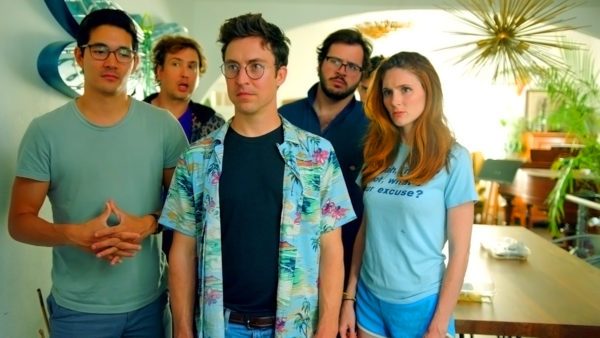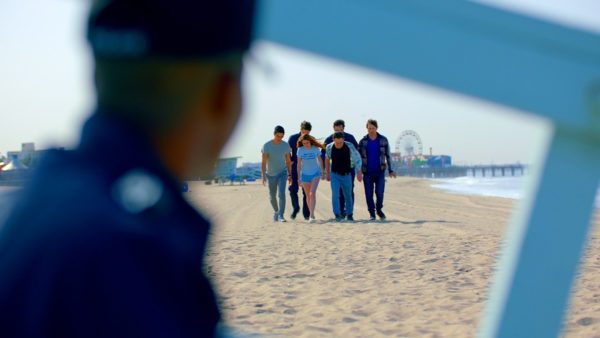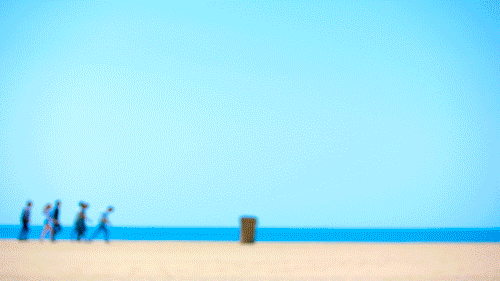If you’re a director of photography hoping to shoot a micro-budget movie as efficiently as possible, there are ways to plan ahead and achieve every bit of production value you can. I learned most of these tricks while filming my most recent feature, the surrealist comedy Grandmother’s Gold (written and directed by Brian Jordan Alvarez), which you can watch for free HERE.

1. Opt for a versatile zoom lens over prime lenses
Shooting my last feature required us to hike through sand, cross rivers, and brave howling winds with our gear (sounds dramatic, but I’m serious). If we had a case full of prime lenses we’d have needed an additional crew member just to carry our lens kit. Not to mention that prime lenses quickly add hundreds or thousands to the budget in rental costs.

In the case of Grandmother’s Gold we used the Sigma 18-35 F1.8 Art and the Sigma 50-100 F1.8 Art lenses. Before we shot the film the director and I tested both lenses by shooting a few sketches. (Click HERE to watch). We both loved the look of the Sigmas wide open, so we shot almost the entire film at a f/1.8. At the moment, the 18-35mm F1.8 Art is my workhorse lens: I can achieve a shallow depth of field at f/1.8 and a wide field of view at 18mm.

If you pair a zoom like the Sigma 18-35 Art with a high-end camera like the Arri Alexa the fidelity of the image and dynamic range will be amazing, and you’ll be able to move fast and travel light.
2. Find creative ways to use your car
A hatchback can be an extremely helpful member of your crew. I’ve used my Prius as a generator for lighting a scene, a dolly, a picture vehicle, and a production office. And, of course, for snack storage.
With a $50 300w inverter you can charge camera batteries, charge laptops while dumping footage, and even power small lights. Personally, I love the Prius and inverter combo because I don’t have to worry about depleting the car’s 12v battery. The Prius will automatically turn on the engine to charge the battery when it runs low – giving you hours of power. You can easily light a night scene using china balls, kinos, or even a small fresnel unit off Prius power alone.
Experiment with different ways you can use your car on set. It could save you money in rentals, and make that giant car insurance bill even more worth it.
3. Buy a good roll of ND
And re-use it again and again and again. ND stands for Neutral Density and it’s sort of like a giant roll of reusable window tinting. When you’re setting up shots very quickly, it can be tempting to accept that windows will be blown out (overexposed) indoors. It’s a look, right? But unfortunately, it can really lower the production value of a project.
When you tape ND over a window it reduces the amount of light coming in without affecting the color temperature. I’d highly recommend buying a roll of ND but not cutting off pieces when you use them. Instead, unroll as much as you need, tape it over the window, and instead of cutting it – secure the remaining roll somewhere where it can’t be seen. When you’re done with the shot carefully remove the tape and re-roll the ND. To start, I’d recommend a thickness of .6 for covering windows.
When you catch glimpses of details through windows in the final project, you will be so glad you did!

4. Schedule outdoor scenes for morning and evening
In my experience, setting up exterior shots in the morning and evening goes quicker than it would during midday. There’s simply a higher likelihood you won’t need to set up as many stands to diffuse or control the light. Direct sunlight hitting your shooting location and actors often creates dark shadows. When that happens the DP must make a decision about whether to expose for the brightest or darkest parts of the image. It’s always easier to get a proper exposure when the you’re not dealing with bright midday light and dark midday shadows at the same time.
If you know you won’t have a lot of time and equipment to control the light then do yourself a favor and strategically schedule your exterior scenes.

5. Travel light
Did I mention you should travel light? For indie movies I’m a big fan of using a smaller crew, and even fewer lenses. When you arrive at a new location only take the gear out of your vehicle that you really plan to use. That way, loading up at the end of the day will be much quicker. It’s an unwritten rule that low-budget indie movies should only have a few locations. That’s partly because location rentals are expensive and also because moving the crew to a new location takes a lot of time. However, the lighter you travel the faster you move. My last film, Grandmother’s Gold, had over 25 location moves in eight days. So carrying a lot of gear and having a big crew wasn’t feasible. At any given time there were more cast members than crew. And this is where shooting the entire feature-length film with these two Sigma Art lenses really helped us stay agile. (Read the next article to find out why.)
Here are the lenses used:
Sigma 18-35mm F1.8 Art and Sigma 50-100mm F1.8 Art lenses.
Be Sure to Check out “How I Shot an Entire Feature Film on Sigma Art Lenses”
Jordan is a freelance director of photography in Los Angeles. Among the three features he’s DP’d, his most recent film, Miss Arizona, won the audience award for Best Narrative Film at the Bentonville Film Festival, 2018. He’s shot projects for Maybelline, L’Oreal, Olay, Time Inc., Condé Nast, Denizen Jeans, Besame Cosmetics, and Facebook Watch. He co-created the Facebook series Christina Tried Her Best, which was viewed over 100 million times in its inaugural ten episode season. Season Two premieres in September 2018. He graduated from the Film and Television Production program at the University of Southern California. Follow him on Instagram: @jordanmckittrick

